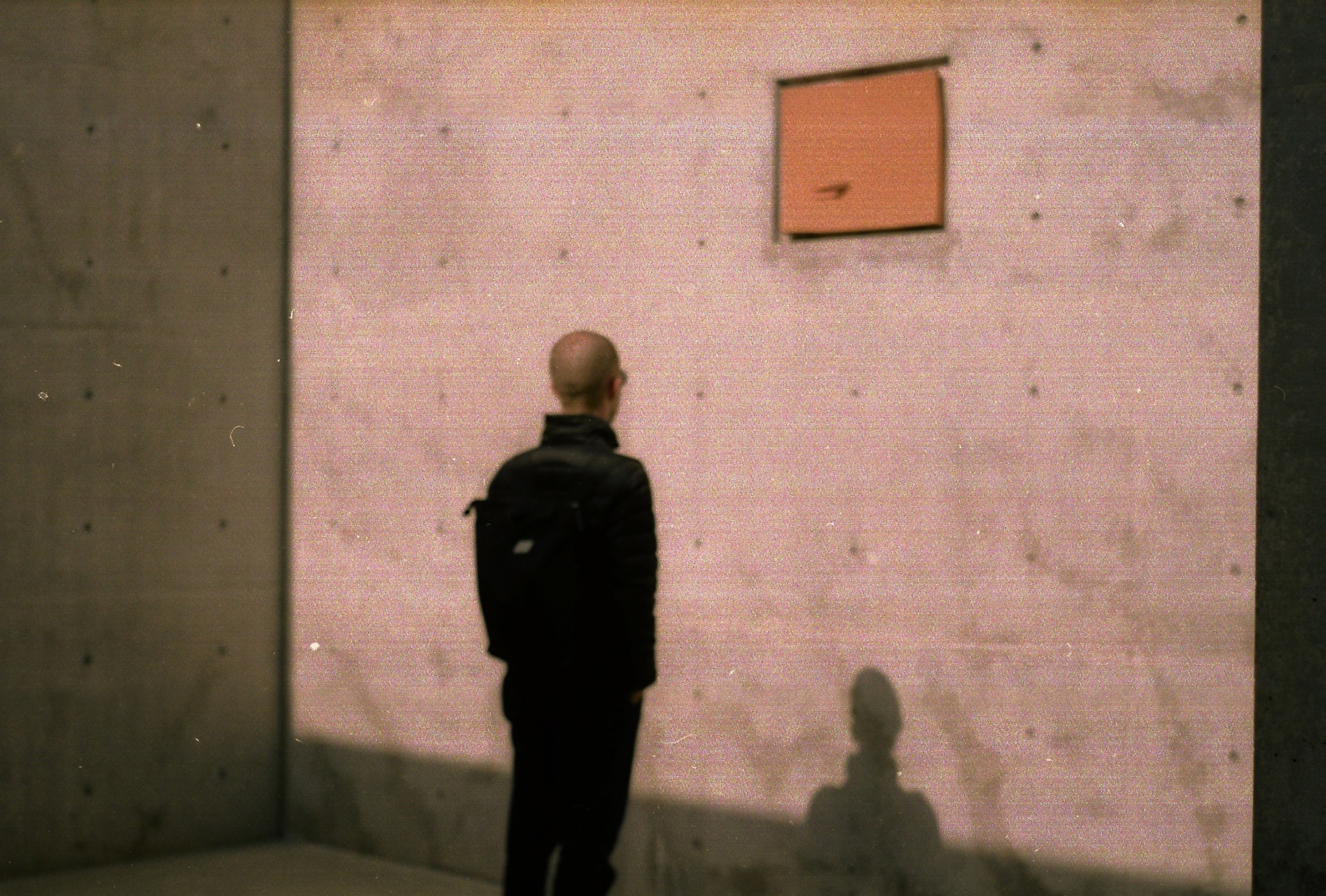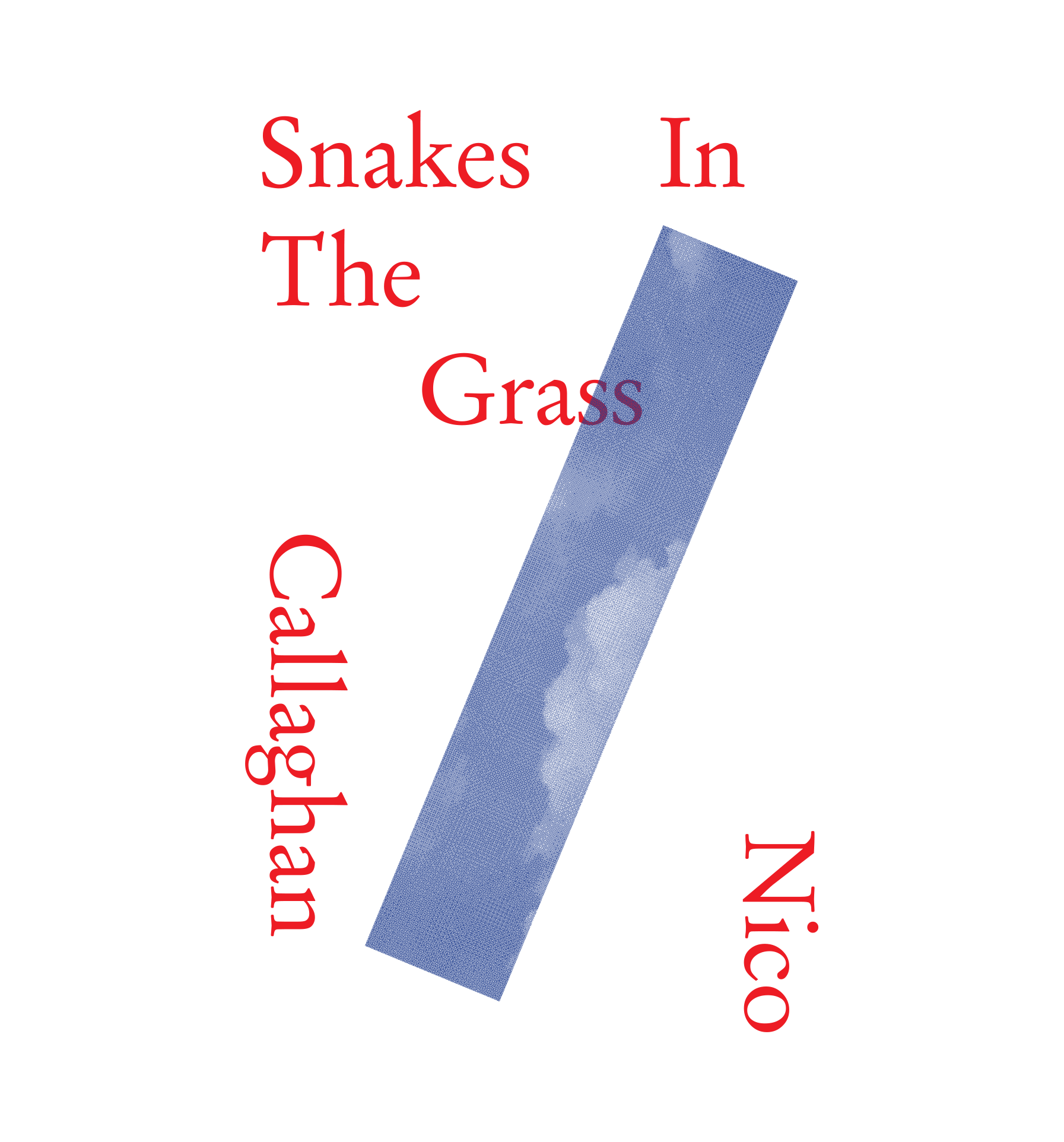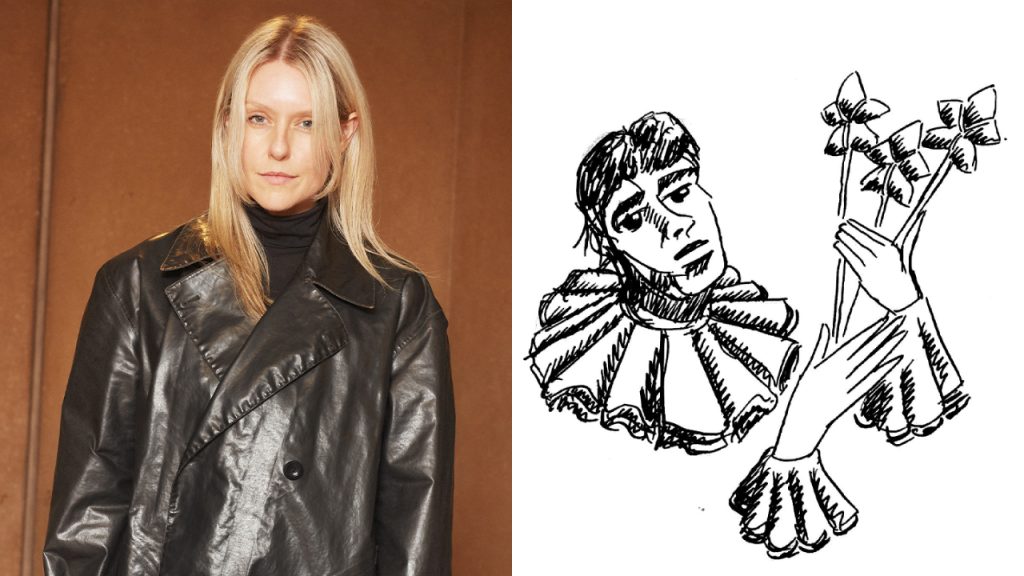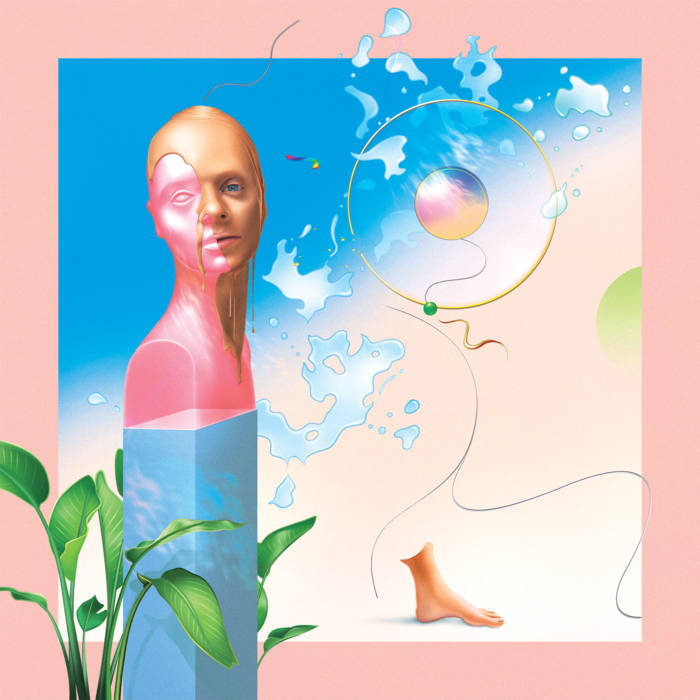Nico Niquo|インタビュー
2018/08/28
『Timeless』、様式としてのアンビエント、手法としてのジャズ。

Nico Niquoは、オーストラリアのメルボルンを拠点にするプロデューサーである。彼の名前を一躍有名させたのは2015年にOrange Milkよりリリースされた作品『Epitaph』である。特に2曲目『Pandimension』の空間を支配したリズムの刻み方とニューエイジなシンセの絡み方は驚くべきクオリティである。音楽的知能指数が高く、さらにデビュー作であるという事実も重なり、彼はいきなり”時の人”と化した。日本でも「Oneohtrix Point Never meets Jam City」というキャッチコピーで国内盤もリリースされた。同じくOrange Milkからリリースされた2017年作『In A Silent Way』では一転、時代の空気とも合致したアンビエント作品となる。今回、Nicoの友人であり音楽家であるju caとCorinがスタートさせるレーベルDaisartからリリースする新作『Timeless』も前作と同様アンビエントという形ではあるが、彼のバックグラウンドであるジャズの要素がかなり盛り込まれているという。新作『Timeless』の話題を中心にNico Niquoにメールインタビューを行なった。
– あなたはどのように音楽を始めたのですか?
Nico Niquo – 僕は自分のバックボーンにあまり深入りし過ぎた話はしたくないんだけど、初めてエレクトロニックミュージックを作ったのは高校生の時だった。ジャズの録音をAudacityで切り貼りしながらね。学校でジャズドラムをやっていたから、大半はジャズのドラム音を使っていた。Billy Cobham、Jack Dejohnette、Tony Williamsといった、60年代、70年代の音楽をすごく愛していたんだ。だから彼らのソロパートを、Steve ReichやPhilip Glassのような1ビットに聴こえる最小限の電子音のようにゆっくりと変化させながら、反復させたんだ。
まぁ言っても僕はそういうのをそんなに良いとは思っていなかった。だけど音を上手く扱えるようになるための良い入門編だったと思う。高校を卒業する時に自分が何を勉強したいかが分からなくなっちゃって、たくさんの新しい音楽を聴きながら、漠然と「何か」を探してたんだ。その音楽の大半が「何か」を勧めてくれた友達からのものだった。20世紀の終わりのXenakis、Boulez、Ferrariといった実験的な音楽と、それよりもダンスミュージックに近いBurial、James Blakeといった、より現代的な音楽の融合を僕は始めることにした。最初にGaragebandを、次にLogicを使うようになった。メルボルンの大学で作曲の勉強を始めた時、僕は本当に興味深いミュージシャンにたくさん出会った。彼らは異なったバックボーンを持っていて、多くの新しい物事を僕に教えてくれた。だから自分がどうやってその音楽を探し求めたか、あるいはその音楽にはどんな歴史があるのかについて深く考えずに、僕はハウス、テクノ、グライム、ジャングル、まぁ実質全部になるんだけど、いろんなジャンルのダンスミュージックにのめり込んでいった。でも思うに、それは僕がそういった音楽と強い関わりが無かったからで、僕の物事との関わり方は、ある特定のジャンル、つまり特定のアイデアに基づくというよりは、様式的な、あるいは審美的な接触が積み重なってできる、かなり奇妙で複雑なものだったってこと。その頃から僕は「何か」に熱中し始めた。いま僕が作っているような音楽を作り始めたのさ!
– 知っている限りでオーストラリアのシーンについて教えてください。
Nico Niquo – メルボルンをはじめ、オーストラリアのあらゆる場所に、たくさんのエレクトロニック・ミュージックが存在しているんだ。メルボルン周辺では、ハウスのような4分の4拍子の音楽が、エレクトロニック・ミュージックの中で最も人気が出る傾向がある。多くの地域と同様に、メルボルンには明確な音やスタイルが無いように思えるし、僕達の場所が他の地域からとても遠いから、インターネットからたくさんの情報を得るようになるんだ。だから友達と僕は、同じブログを読んで、同じレコード屋に行って、夜には同じショーやクラブに行くかもしれないが、お互いとても強い結び付きを感じていたとしても、全く違う音楽を作るんじゃないかな。
僕の周りのシーンはあまり特定のジャンルやスタイルを演奏するという感じじゃなくて、ある思潮や、もっと広義の雰囲気に合うものを演奏するという感じだった。友達にCorinっていうとても未来的で、シンセティックで、少しのグライムとトランス、みたいなサウンドデザインをするミュージシャンがいるんだけど、もし彼女と一緒に演奏するってなったら、僕はより暗くて環境音的な感じのライブセットをするだろう。でも他の夜には、僕は友達とバーでDJをするかもしれないし、クラシックハウスでは、ジャズやブレイクビーツを奏でるだろう。なぜなら僕達は、演奏している人がどうしてそんな風に演奏するのかを理解しているからだと思う。何かを期待して思い通りにならない人達にとっては混乱するかもしれないけど、それはいつもどんな会場かとか、そこにどんな客が来るのか、で決まるんだ。
– あなたは音楽以外の仕事を持っていますか?
Nico Niquo – 僕は運よくメルボルンの書店で働いている。とても忙しいけど、僕と同じように音楽やアート、そして本に夢中になっているような、たくさんの素晴らしい人達と働いているんだ。一緒に働いている人の中には、普通なら自分で見つけられないような、本当に面白い音楽を僕に紹介してくれる人もいて、この職場ならではの魅力的な特別手当と言えるね。
https://www.youtube.com/watch?v=CD5mEUHGKX8
– ニューアルバム『Timeless』について聞かせてください。Daisartからのリリースはどういう経緯で決まりましたか?
Nico Niquo – 新しいアルバム『Timeless』は長い期間制作していたんだ。最初の曲『Isfahan』を書き始めたのが約2年前、それから他の全曲を書き上げたのが去年だ。僕は制作スピードがゆっくりな方で、たぶん1曲のためのアイデアを得るのに1カ月ほどかかるんだ。それから最終的にPCで作り始める前に、何を盛り込むべきか、音がどう聴こえるべきか、他の曲とどんな感じにフィットするかとか、しばらく頭の中でそれをよく考えるんだよね。
去年の年末に友達のJustin(彼はjucaとして音楽を作っている)と僕は、メルボルン発でレコードをリリースするってアイデアについて話していたんだ。そしたら彼とCorinが僕の新しいレコードを、彼らの新しいレーベルのDaisartからリリースしようってなってね。
それと去年、自分の作曲について本を書いたんだ。『Snakes In The Grass』という本で、レコードと同時にリリースされるよ。この2つは同じプロジェクトではないけれど、アルバムに入っている曲はその時僕が調べたり、聞いたりした事に影響を受けているんだ。

– 『Timeless』を制作するにあたってはどういった影響がありましたか?
Nico Niquo – このアルバムが、(ほとんど全ての曲でサックスを演奏している僕の友達、Jared Backerのおかげで)、多くのジャズの手法と様式的に”アンビエント”である一方で、影響を与えてくれた多くのものは必ずしも”アンビエント”な音楽ではない。去年、僕はTerre Thaemlitzに夢中になり始めた。というのも、彼の曲の断片は今まであちこちで耳にしていたんだけど、僕が本を読んで考えたりした多くの事は、Terre Thaemlitzが幅広く書いたものだったから。だから、僕が音楽に関してやろうと思うことには、DJ Sprinkles(Terre Thaemlitz)の強い影響がある。
また、Terre Thaemlitzから、そしてDJ Metatronのような活動から音だけでなくて、空気感やどんなふうに音楽が表現されるのかという点で、多くのインスピレーションを得ている。同じように僕は、音楽を作るにも他の事をするにも、周りの友達からたくさんの影響を受けてきたんだ。アルバムのジャケットをデザインしてくれたSam Horman、僕の本のデザインをしてくれたAlex Margetic、レコードをリリースしてくれたJustin、レコーディングやエンジニアをしてくれたJoseph Buchan。たとえはっきりとそれが分からなくても、アルバムのコンセプトは録音した音に入ってるよ。
もちろん、アルバムに大きな影響を与えたのはジャズだ。他のことを探求するためにしばらく離れていたけれど、この2年以上、ジャズに対しては新たな魅力を感じている。70年代の終わりにECMレーベルから出た多くのレコードが僕にとって重要である一方で、もっと古いジャズ、特にビバップ時代に向かいつつある30年代や40年代のバラードに対しては、美と洗練を感じるよ。僕はバラードに対してはそんなに興味を持ったことが無いんだ。もっと若かった頃は、速くて、ずっしりとしたドラムが鳴りまくるジャズを聴きたがったようにね。でも Billy Strayhornの音楽を聴いて、彼の人生について書かれたものを読んで、Duke Ellingtonと仕事をしたことも含めて、音楽がどこからやって来たのかという幅広い感覚を与えてくれたし、そのことは僕にとって物凄く大きな衝撃だった。
– アルバムはどのような制作プロセスを辿りましたか?
Nico Niquo – 『Timeless』は全曲、Logic Xで作られたんだ。僕が2012年頃にLogic 8 のお試し版を使ってた時みたいに、アルバムを作る間にその使い方を学んだんだ。僕のPCが去年の初めに壊れてしまったから、新しいシステムに移行しなくちゃならなくて。その時はイライラしたけど、変えざるをえなくなったことに今では感謝しているんだ。たくさんの曲を作って、僕は新しい素材を仕込んでショーをやったんだ。Albrecht La’Brooy(Analogue Attic)とのショーで弦楽器の演奏者と共演したものもあれば、サックスやクラリネットの伴奏でJaredとのショーをさらにいくつかやって、そして僕はJaredと演奏することに慣れてきたんだ。アルバムのために彼の演奏を録音することが最も論理的だと思えたほどに。
Josephが僕達の演奏を録音したんだけど、僕は曲の中で、ドラムを少し演奏した。ハードウェアのシンセによる曲もいくつかあるけど、大半はLogicのスクラッチや、少ないサンプルから作られているんだ。こういう作業は僕にとって良い方法だと思った。オーケストラの楽譜みたいに機能するからさ。高校時代、どんなふうにアンサンブルが調和するのかという感覚を初めて覚えた。物事全般に対して、大きなイメージにいかに当てはめるかという感覚。オーケストラのリハーサルをするみたいに集中することができるんだ。
– 今年6月に行われたOrange Milkジャパンツアーはいかがでしたか?
Nico Niquo – Seth GrahamやOrange Milkファミリーと日本中をツアーしたことは素晴らしかったよ!日本はヨーロッパやアメリカよりもオーストラリアに近くて、移動するには最高の場所だから、前にも何度か日本を訪れたことがあるんだけど、日本へ来て、ショーをやって、僕と同じような感性やネットワークを持っているように見えるこの国のたくさんのミュージシャンと出会うことは本当に最高だったし、日本という国の別の側面を見ることができたと思っている。少し圧倒されたのは、僕が出会った人々がみんなとても協力的で、僕達の演奏にすごく興味を示していたことだ。物凄く緊張したよ。僕達をサポートするために目に見える努力をしてくれたり、僕達を支えてくれた人達のために出来るかぎりの最高の演奏をしたかったから。
東京はメルボルンの人々、とくに若い子達を惹きつけると思う。とても神秘的な魅力を持っていて、そこには音楽的なものでも、その他のものでも、驚くべきものがすごくたくさんあった。もちろん僕達が訪れた他の都市や地域の多くも、それぞれの在り方が素晴らしかったよ。落ち着いていてフレンドリーな人々が住むクールな街、福岡の神社にある相撲部屋で演奏したことは、決して忘れないよ。そしてもちろん岡崎のこともね。あと他のミュージシャン(君のこともだよ、Nobuyuki!)のこの上ないクオリティに関して、こんなにも自分の理解を越えていると感じたことは無かったと思う。できれば近い将来、もう一度演奏するために、また来日できるといいな。
<原文>
– How did you get into trackmaking?
Nico Niquo – I won’t go too far into my backstory, but my first experience making “electronic” music was in high school, cutting up and looping jazz records in Audacity, mostly jazz drumming as I had been playing jazz drums at school. I loved really intense stuff from the 60s, 70s – Billy Cobham, Jack Dejohnette, Tony Williams – so would take solos of theirs and twist them into repetitive, slow-changing Minimalist electronic pieces that sounded a bit like Steve Reich or Philip Glass, which was another area I was studying at school.
I don’t think it was very good music (!) but it was a good introduction to a very simple program to manipulate audio. When I finished school I was unsure what I wanted to study, and spent time exploring things while listening to a lot of new music, mostly from friends recommending things. Once I started to make connections between the more experimental end of 20th century music that I’d been looking at – Xenakis, Boulez, Ferrari – and more contemporary music more aligned with ‘dance music’ – Burial, James Blake – I fell into using first Garageband and then Logic to make (quite bad) music that bridged those worlds.
When I started university in Melbourne studying composition, I met a lot of really interesting musicians from different backgrounds who introduced me to a lot of new things, so without much idea of how I was exploring it or what the history of the music was, I got really obsessed with lots of different dance music – house, techno, grime, jungle, everything really – but I think because I didn’t have a strong history with that music, the way I was associating things was quite odd, more intrigued by overlapping stylistic or aesthetic touches than by distinct genre-specific ideas. From there I started absorbing things and making the music that I make now!
– What is the Australian music scene like?
There’s so much electronic music in Melbourne, around most of Australia really. 4/4 stuff like house tends to be the most popular kind of electronic music around Melbourne, but there are people doing all sorts of things. I think like many places, Melbourne doesn’t seem to have a distinct “sound” or style, and because we’re pretty far away from other places we tend to get a lot of our info from online tangents. So my friends and I might read the same blogs, go to the same record stores, go to the same shows or club nights, but will make completely different music even though we feel very connected.
I guess the scene around me is less about playing a specific genre or style, but more about playing stuff that fits in with a certain ethos, or wider atmosphere – so one night I might play with my friend Corin, who does very synthetic, futuristic music, bits of grime, trance, sound-design, and I’ll play a set of more dark and ambient things, but another night I may be DJ’ing with friends at a bar and we’ll play classic house, jazz, breakbeat, and I think it all flows because we understand why the person who’s playing is playing like that. It may be confusing for people who come expecting one thing and something else happens, but usually it just depends on what the venue is like, what kind of crowd there is.
– Besides making music, do you have another job?
Nico Niquo – I’m lucky enough to work in a bookstore in Melbourne, it’s pretty busy but I work with a lot of great people who are also into music, or art, books of course. Some of the people I work with introduce me to really interesting music that I wouldn’t usually find on my own, which is a nice bonus to have to a workplace.
– Tell us about the new album “Timeless”. How did you decide to release it with Daisart?
Nico Niquo – My new album “Timeless” has been a long work-in-progress, I started writing the first track for it (Isfahan) about two years ago, and then wrote all the other tracks last year. I tend to work very slowly, maybe getting an idea for a track every month or so, and then thinking it over in my head for a while, trying to think about what to include, how it should sound, how it fits with the other tracks before eventually starting to make it in the computer.
Late last year my friend Justin (who makes music as ju ca) and I talked about the idea of creating and releasing a record from Melbourne, and decided that he and Corin would release a new record of mine on the new label, Daisart. I also wrote a book last year for my composition studies, which will be released at the same time, called “Snakes In The Grass”. The two aren’t the same project, but the music on the album is influenced by things I was researching or listening to at the time.
– What are some of the musical influences behind “Timeless”?
Nico Niquo – While the album is stylistically “Ambient” with a lot of jazz touches (mostly thanks to my friend Jared Backer who plays saxophone on all the tracks), a lot of influences aren’t necessarily “Ambient” music. I had listened to pieces here and there, but last year I became obsessed with Terre Thaemlitz, as a lot of things I was reading and thinking about for the book are things that Thaemlitz has written about extensively. So there is a strong DJ Sprinkles influence on what I chose to do with the music, even if I may have incorporated it subtly.
I also took a lot of inspiration from Traumprinz, and their work as DJ Metatron too – in terms of sound, but also atmosphere and approach to how the music is presented. A lot influence also came from my friends around me, those that make music and those that do other things, too – Sam Horman who designed the album art, Alex Margetic who designed the book, Justin who’s releasing the record, Joseph Buchan who engineered and recorded the instruments, all were instrumental in the musical sound and concepts of the album too, even if it may not appear obvious to them.
Of course, the big influence on the album is jazz music, which I had moved away from for a while to explore other things, but over the past two years have had a renewed fascination with, perhaps because of some distance. While the many records from the ECM label from the late 70’s are of great importance to me, I found so much beauty and reflection in older jazz, particularly ballads from the 30s and 40s heading into the bebop era. I’d never really been super into ballads, as when I was younger I wanted to listen to more immediate, often drum-heavy jazz. But listening to the music of Billy Strayhorn, and reading about his life and work with Duke Ellington gave me a broader sense of where the music came from, and it’s had a very powerful impact on me.
– What was the production process for the album?
Nico Niquo – All of “Timeless” was made in Logic X. I learned how to use it while making the album, as I’d used a trial version of Logic 8 since about 2012, and my computer died at the start of last year so I had to adjust and move to a new system. I’m glad I was forced to change, even if it was frustrating at the time. Once I’d made a bunch of tracks, I did some live shows with the new material, one with some string players for a show with Albrecht La’Brooy (Analogue Attic), and then a few more with a Jared on saxophone and clarinet – and then I just got very used to having Jared with me on the tracks, that the decision to record him for the album seemed the most logical.
Joseph recorded us, and I played quite a bit of drums and percussion on the tracks, too. There are a few hardware synth leads, but pretty much everything is built up from scratch or a handful or samples in Logic. I find it’s a nice way for me to work because it works kind of like an orchestral score, which was my first sense of how music ensembles fit together at high school. You can focus on or trial sections like you would rehearse in an orchestra, while still having a sense of how it fits into the broader picture of everything.
– How was this year’s Orange Milk Japan tour?
Nico Niquo – Touring through Japan with Seth Graham and the Orange Milk extended family was amazing! I had been to Japan a few times before, as it’s a lot closer to Australia than Europe or America, so is a really great place to travel to – but to go there to do shows and to meet a lot of local musicians who seem to belong to similar kinds of scenes or networks as mine back home was really great, and I got to see a very different side to Japan. Everyone that we met was so supportive and interested to hear us play, which I was a bit overwhelmed by. I felt very nervous, as I wanted to play as best I could for those that had obviously made the effort to help us out, come support at shows, that kind of thing.
Tokyo has a very mythical allure to people in Melbourne, particularly young people, and there’s so many amazing things there, musical and otherwise – but I think many of the other cities or places we travelled to were really incredible in their own ways, too. I’ll never forget playing in a sumo stable in a shrine in Fukuoka, a truly cool city with such chill and welcoming people, just as I won’t forget playing in Okazaki – I don’t think I’ve ever felt so out of my depth with the sheer quality of the other performers (yourself included, Nobuyuki!) Hopefully I can make it over there again before too long to play again.

Tracklist:
A1: The Lucky Country
A2: Timeless
A3: Silent Feet
B1: Isfahan
B2: Chelsea Bridge
B3: Lush Life
B4: (In My) Solitude
Artwork, Layout and Design by
Samuel Horman
Mastered by
Wouter Brandenburg
category:FEATURE
tags:Daisart / Nico Niquo / Orange Milk Records
RELATED
-
2023/08/28
メルボルンのレーベルDaisartとLisa Lerkenfeldtのジャパンツアーが開催
東京と京都で4公演 オーストラリア・メルボルンのエレクトロニカ・アンビエントレーベル〈Daisart〉と、〈Shelter Press〉などから作品を発表するLisa Lerkenfeldtによるジョイントジャパンツアーが開催。東京と京都にて4公演を予定している。 〈Daisart〉のファウンダーであるJとLisa Lerkenfeldtがライブセットを披露。チェロ奏者であるEmile Frankelがそれぞれの演奏に参加。本ツアーは、新しいアンビエントの流れと独自のミニマリズムを感じさせる両者のサウンドスケープを体験できる機会となる。 国内からはYoshio Ojima & Satsuki Shibano、 Ultrafog、 H.Takahashi、0:brei、Yusaku Araiが各公演でパフォーマンスを行い、DJとしてAkhira Sano、shiranaihanaが参加。 9/9 (土) 18:00- LISTENING TO COLORS @Sancha PLAYS 東京都世田谷区太子堂4丁目23−13 遊楽ビル 2F Adv : ¥2500 Door : ¥3000 Ticket: https://t.livepocket.jp/e/d2p4c <Live> Yoshio Ojima & Satsuki Shibano Lisa Lerkenfeldt J and the woolen stars Ultrafog PA: Shota Murakoshi – 9/12 (火) @Kankyo Records 東京都世田谷区上馬1丁目35−13 ロイヤルアークガーデン 107号 Live performances by Lisa Lerkenfeldt and H. Takahashi Poetry reading by J – 9/15 (金) 19:00- Daisart in Tokyo @Forestlimit 東京都渋谷区幡ケ谷2丁目8−15 Entrance
-
2018/07/19
食品まつり a.k.a foodman|インタビュー
今年名古屋に戻ってきたfoodman。2016年の『EZ Minzoku』から2年、ニューアルバム『ARU OTOKO NO DENSETSU』がついにリリースされる。 食品まつり a.k.a foodmanは樋口貴英のソロ名義である。2012年にOrange Milk Recordsから『Shokuhin』をリリースして以降、数々の作品を世に送り出している。唯一無二のキャラクター(とサウンド)は国内外問わずあらゆるシーンやミュージシャンからリスペクトされており、そのサウンドはジューク/フットワークを軸にハウス、エクスペリメンタル、ヒップホップ、J-Pop、アンビエントなど様々なジャンルをごちゃごちゃに混ぜたり混ぜなかったりする。せっかく混ぜたのにほとんど削ぎ落としたりもする。紙を擦ってカサカサと音を立てているだけでも、無音の中で怒号のように叫びまくっても、彼の事を知っている人は食品まつりっぽいと言う。ただ単にアンダーグラウンドヒーローな音楽家とは違い、必ずポップであることも彼の特徴だ。ノイジーでブルータルなテクノプロデューサーContainerのレーベルPlastic Bagsからカセットをリリースしたかと思いきや、世界のトップDJであるDiploのMad DecentのサブレーベルGood Enoffからもリリースを行う。横の層はもちろんのこと縦の層も巻き込める稀有な存在、食品まつり a.k.a foodman。名古屋は大須の某タコス屋でタコスを食べずに話をした。 – もう定着しすぎて逆にそのインパクトある名前の由来を知らない人もいるかと思うので、よかったら教えてください。 食品まつり a.k.a foodman(以下foodman) – 最初、本名の樋口貴英でやってたり、釣心会って名前でやってたりしてたんです。ちなみに釣心会っていうのは僕がやってた釣りのサークルからきてるんですけどね。それで10年ちょっと前に、名古屋にドラびでおさんが来るイベントがあって、その日はちょっと違う名前でやりたいなって思って近所歩いてたらナフコ(名古屋ローカルのスーパーマーケット)があって、食品まつり開催中って旗がなびいてて、これだ!と思って使用して、そのままダラダラ続いてるっていう感じです。 – a.k.a foodmanはいつ付いたんですか? foodman – 2012年ぐらいにTwitter上でJuke/Footworkの方々とやり取りしてて、僕Traxman好きなんで「〜マン」っていいなって呟いたら、広島のCRZKNYさんが「フードマンが良いんじゃないですか」って言ってくれまして。「あ、イイっすね!」って言って、そのまま合体させたっていう。まぁポリシーもなんもないっていう。それが定着しちゃったんですよね。なんか食品に詳しいんじゃないかって思われたりするんですが、ただ成り行きと思いつきで来ちゃったっていう感じです。 – 今となってはモーニング娘。以上に何も違和感を感じませんね。 foodman – 未だに自己紹介するときに、なんでこんな名前にしたんだろうって思うんですよね。 – え、まだ思うんですか? fooman – ゲシュタルト崩壊っていうか、毎回「食品まつりです」って言う度に、俺は何言ってるんだろう?って思いますよ。もしかしたらいつか名前変わるときがくるかもしれませんけど。 – 何に変わりそうですか? foodman – 最近、ヒーリング樋口って名前がいいなって思ってて。樋口ヒーリングとか。あと、電子けんじとか。 – けんじは誰なんですか(笑) foodman – けんじは意味ないですね(笑) – 食品さんって今音楽以外の仕事を持たずに生活してます?普段どんな生活サイクルなんですか? foodman – ライブとか自分の音楽の制作もしてるんですけど、広告系の音楽制作が今はメインですね。朝9時とか10時に起きて、メールチェックして、昼ぐらいから制作を始めて、夜飯食って、20時ぐらいから夜中12時〜9時ぐらいまで寝るっていう。ライブあるときは準備してますね。ちょっと前だと、地元の近くの春日井駅のサイネージの音楽作ったりとかしましたね。 – そのときはどんなの作るんですか? foodman – 自分の音楽とは全く違いますね。注文内容も色々あって、リファレンスの音が送られてきたりとか、何回か修正して形にしていく感じですね。 – ちゃんとクライアントワークですね。 foodman – その仕事は10年ぐらい前からやってたんです。今年まで横浜に4年間居たんですね、で2014年までは名古屋のカラオケの音を作ってる会社で働いてたんですけど、そのときから副業でCMの仕事もしてたんですよ。横浜に引っ越してから海外ツアーとか増えてきたんで、思い切ってフリーランスになろうかなと。なので、仕事の量に波がありますよね。 – 時代を遡りますが、子供の頃は名古屋で育ったんですか? foodman – 名古屋で育ちました。母ちゃんが石垣島の人で、1年ぐらい沖縄に住んだりとか、また戻ったりとか、小学校のときに何回かありましたね。 – 音楽に目覚めたのはいつですか? foodman – 目覚めたのは高校三年生ぐらいですね。それまで全然興味なくて、アニソンとかゲーム音楽とかいいなって思うぐらいで、CDも買わないし、プレイヤーも持ってなかったですね。高三のときにたまたまHMV行ったときにたまたま試聴機で聴いたのがドラムンベースで、めちゃくちゃかっこいいなって思って。それで自分で色々調べたらクラブミュージックが存在してて、テクノとかがあるんだってわかって、そこから本買って調べて出してって感じですね。そっからクラブ行ってみたいなとか、自分で曲作ってみたいなとなりました。 – 名古屋、横浜、名古屋と移住してますが、住む街が作る音楽に影響を与えることはありますか? foodman – 名古屋にいたときから色々な国の音楽とか東京のアーティスト聴いたりしたんですけど、やっぱ現地じゃないとわからない人もいっぱいいて、ネットがあるけど行かないと本当に感じれないものってあるじゃないですか。例えば東京だとフォレストリミットとか。行かないとあの独特の雰囲気はわかんないですよね、こんな人たちがいてこんなコアなシーンがあるんだみたいな。そういう影響を受けて作る音楽や聴き方も変わることはありますね。 – 前にMASSAGEのインタビュー(前編、後編)で制作環境の話をされてたじゃないですか。あれから機材変わりました? foodman – ちょっと変わりましたね。基本はAbelton liveとElectribeを併用したり、片方だけ使ったり。それにAbleton Pushを導入しました。ライブは8,9割Electribeから音が出てるという感じですね。最近また新しい感じにしたいと思ってるんで、今色々考えてますね。 – 以前から1曲毎の制作に時間をかけないと仰ってましたし、Zaytovenの制作スピードに関する発言にも共感してるようでしたが。 foodman – やっぱ作り手の気持ちとして勢いが出るというか。あと今の世の中の流れ的にもポンポン出してくし、同じような曲が出てくるのもあれだけど。それはそれで面白いんじゃないみたいな感じです。それをやってくうちに突然変異的に変なものが出てくる可能性もあるし。一概に量産することが悪いことじゃないし、量産することによって、いきなりわけのわかんないものが出てくる気もするんですよね。 – ハプニング大好き? foodman – ハプニング大好き。ほんともうハプニングしかないですね。全てにおいて。 – ハプニング待ち? foodman – ハプニング待ち。なんかクラブ行っても予定調和になるよりは、なんか変な酔っ払いが寄ってきたりとか、そういうことが起きたほうが俺は好きです。変な状況の方がなんかワクワクするんですよね。みんな仲良くよりかはいきなり喧嘩始まったりとか。さすがに喧嘩は怖いですけど(笑)それぐらいのが面白いんじゃないかなって。もちろん毎回それだと疲れるんですけどね(笑) 2017年にテレビ神奈川で特集された映像。自身の事をエラーが起きやすい人間だと分析している。ゲップのくだりやコロッケのくだりなどの発言と、アナウンサーの綺麗なナレーションとのギャップがシュール過ぎる映像。 – 以前カトーマサカーで、紙をカサカサやるだけのライブやってましたよね。 foodman – あれは最初弾き語りのライブをやるってなってて、家でウクレレ弾いたら、なんか違うなってなって、紙でやったらいいかなって、、 – ウクレレから紙ってだいぶ飛びましたね(笑)。 foodman – どっちもマイクを使うじゃないですか。なのである意味生コラージュですね。突拍子もないことをやったつもりはないんですよね。リアルタイムで演奏してるぐしゃぐしゃっとしたノイズミュージックのようなイメージです。 https://www.instagram.com/p/BIXknMhBhRy/?hl=ja&taken-by=nobuyukisakuma –
-
2019/05/17
Koeosaemeのニューアルバム『OBANIKESHI』が本日リリース
Aylu、atnr、El Murkiが参加。 日本を拠点にするサウンドデザイナーRyu YoshizawaのプロジェクトがKoeosaemeである。2017年にSeth GrahamとKeith Rankin (Giant Claw)が主宰を務めるOrange Milkからカセットアルバム『Sonorant』をリリース、2018年にはDavid M. Romero主宰のバルセロナのレーベルangoisseより『Float』をリリースしている。 そして本日、Koeosaemeのニューアルバム『OBANIKESHI』がOrange Milkからリリースされた。ブエノスアイレスのプロデューサーAyluをはじめ、El Murki、atnrなどがアルバムに参加。インタビューでも影響源として語っていた「ホラー映画」のワンシーンを切り取ったかのような唐突な展開の連続、グロテスクな音が次々と襲いかかってくる。 アルバムはレコード/デジタルでリリース。購入はこちらから。また、KoeosaemeはCVNとの北米ツアーも来月に控えている。
FEATURE
- 2025/11/12
-

-
限界インターネット時代に俺たちは”サイコ”になる|Machine Girl interview
12月に東京大阪を回るジャパンツアー開催
more
- 2025/10/31
-

-
下北沢から渋谷へ、円環拡張開始|「AVYSS Circle 2026」過去最大規模で開催
DAY & NIGHT / 渋谷 5会場・7フロア使用
more
- 2025/10/22
-

-
「重さ」を「軽さ」に変えるPinkPantheressの魔法
PinkPantheress 特別企画第三弾
more





